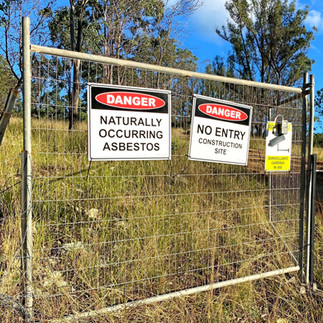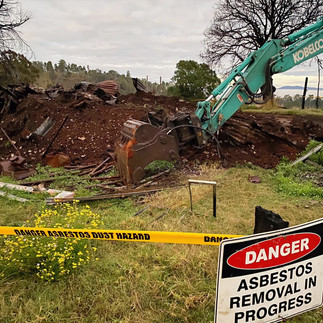Safe asbestos removal – everything you need to know
- Simon Bice

- Jul 1, 2021
- 3 min read
Does the word asbestos fill you with fear? If so, you’re not alone and for good reason. Asbestos, as we know now, can be a very dangerous material. What’s more, it’s estimated that 1 in 3 Australian homes that were built or renovated prior to 1987 contain asbestos. But what exactly is asbestos, why is it such a problem and how do you best go about safely removing it? We take a look at all this and more in our latest blog post.

Asbestos defined
According to SafeWork Australia, asbestos is defined as: “a naturally-occurring mineral, typically found in rock, sediment or soil. It has strong fibres, naked to the human eye, that are heat resistant and have good insulating properties.
Why is asbestos so dangerous?
Although asbestos was once widely used in a range of different building materials – including fibro sheeting (flat and corrugated), flue pipes, drainage, roofing and gutter more – since December 31 2003, there has been a total ban of asbestos in Australia.
This is because of the health risks that asbestos poses when its fibres are released into the air and breathed in.
Breathing in asbestos fibres can cause asbestosis, lung cancer and mesothelioma and other health problems. Further asbestos-related findings, as provided by Safe Work Australia indicate:
The risk of contracting these diseases increases with the number of fibres inhaled.
The risk of lung cancer from inhaling asbestos fibres is greater if you smoke.
Those who get health problems from inhaling asbestos have usually been exposed to high levels of asbestos for a long time. Symptoms don’t usually appear until 20 to 30 years after initial exposure.
Furthermore, workers must not handle asbestos unless they have been trained and hold a licence that is current and appropriate for the type of work being done.
How to mitigate the risks of asbestos & asbestos removal
Due to the serious health issues associated with asbestos, DIY removal is not recommended. Even if you are dealing with small amounts of asbestos it’s best to seek the expertise of a licensed asbestos removalist, who will be able to:
Identify asbestos and asbestos containing material in either commercial or residential settings and record this in an asbestos register.
Assess the risk of exposure to airborne asbestos.
Eliminate or minimise the risks associated with asbestos by implementing control measures and or management plans.
Review control measures to make sure they are effective.
When engaging asbestos assessors and removalists, you should always ask for a copy of their licence. If they can’t provide this you can call SafeWork in your state to confirm they have the appropriate class of licence for the job.
What is an asbestos register?
An asbestos register as defined by Safe Work Australia is a document that lists all identified—or assumed—asbestos in a workplace. An asbestos register must record:
Any identified or assumed presence of asbestos
The date associated with the identification of asbestos
The asbestos location, type and condition
Asbestos registers should also be regularly updated and maintained to ensure accuracy of information.
What is an asbestos management plan?
An asbestos management plan (AMP) is a written document used by the person or party controlling or managing a workplace that has been identified as containing asbestos.
An asbestos management plan, as outlined by Safe Work Australia, must:
Identify the location of asbestos and any naturally occurring asbestos.
Include decisions—and reasons for them—about the management of asbestos at the workplace, for example safe work procedures and control measures.
Outline procedures for incidents and emergencies involving asbestos, including who is responsible for what.
Be maintained with up-to-date information.
Be reviewed at least every five years or when requested by a health and safety representative, or when asbestos is removed, disturbed, sealed or enclosed, or when changes to a control measure are made or when the plan is no longer adequate.
Be accessible to any worker or the PCBU who has carried out or intends to carry out work at the workplace and any health and safety representatives who represent workers at the workplace.
Provide information, consultation and training responsibilities to workers carrying out work involving asbestos.
Other information that could be included in the asbestos management plan includes:
An outline of how asbestos risks will be controlled, including consideration of appropriate control measures.
A timetable for managing risks of asbestos exposure, including dates and procedures for the review of the asbestos management plan and activities that could affect the timing of a review.
Identify those with responsibilities and their responsibility under the asbestos management plan.
Air monitoring procedures at the workplace, if required.
Want to know more about asbestos removal?
From home renovations to large-scale demolitions, the team at North Coast Occupational Hygiene (NCOH) can help you understand what asbestos is and what precautions you specifically need to take.
Our SafeWork NSW licensed asbestos removalists and assessors can help identify any asbestos you may have in your home or workplace and provide advice and recommendations for managing it.
If you would like more information on how to remove asbestos from your residential or commercial property, contact the NCOH team today.








Comments